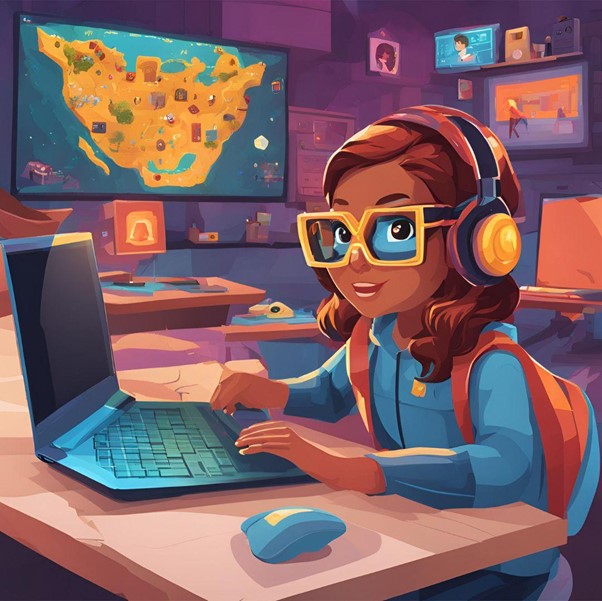Safe App Search | Download Apps Safely
When downloading apps you should always do so from trusted sources. We’ll dig deeper in to how to achieve that, plus offer additional security measures to beware of. But first, let’s talk about our safe app search tool on this page. Just like our other search resources, searching for an app below filters websites to help encourage safe app downloads.
We stress that you follow the advice given in the article below to ensure safety while finding and using apps.
Bookmark this page to Search for Safe Apps
enhanced by Google
App Safety Essentials
Protecting your identity and devices should be your first priority in every aspect of your online life. The use of apps is no exception. With every app download comes potential risks to your data and privacy. There are also the possibility of security threats like malware, phishing scams, and unwanted data tracking.
Here’s are app safety essentials to follow keep your app experience secure.
Download Apps from Trusted Sources Only
- Official App Stores: Stick to well-regulated stores like Google Play Store or Apple App Store, which have strict policies for apps. Even though some threats can slip through, these stores are generally safer than third-party sources.
- Third-Party Stores Caution: Apps from outside of official stores may not be scrutinized as closely and could contain malware or spyware. Our safe app search seeks to weed out those bad actors, but always follow the safety measures in this guide as well.
Check App Permissions
- Read Permissions Carefully: Before installation, check what permissions the app is requesting. A flashlight app, for instance, doesn’t need access to your contacts or location.
- Limit Access on Your Device: Be sure to go to your app settings periodically to review permissions and disable those that seem unnecessary.
Read Reviews and Ratings
- Pay Attentions to User Feedback: Reviews can reveal hidden issues like data theft, excessive ads, or glitches. If an app has poor ratings or negative feedback about privacy issues, think twice before downloading.
- Research Developer Information: Investigate who developed the app. Established developers with a history of safe apps are more trustworthy.
Enable Two-Factor Authentication (2FA)
- Enhanced Security: Many apps, offer 2FA to add an extra layer of security. It’s easy to activate and very important to do. Two-factor authentication stops a hacker in their tracks because they would need both your password and a second form of verification (such as your phone) to access your account.
- Password Management: We can’t stress enough the need for any account, including apps, to use strong, unique passwords for each app to prevent one security breach from affecting multiple accounts. Use a password manager to save your unique passwords.
Keep Apps Updated

- Turn on Automatic Updates: Developers often release updates to patch vulnerabilities and improve security. Allowing automatic updates fixes glitches as soon as possible. Of course, if you think there is an issue with your app, you can update it manually at any time.
Occasionally review the developer’s notes on each update to understand what’s being improved, especially for critical apps like financial or messaging apps where security is a priority.
- Delete Outdated Apps: Remove apps you no longer use. These can sometimes create unexpected security issues if they aren’t actively maintained by the developer.
Watch Out for Phishing Attempts
- Scrutinize Links: Be suspicious of messages within apps or in email or texts that prompt you to enter personal information or click on links. Scammers may attempt to impersonate official app messages to trick you.
- Check Sources: Never click on a link or download an attachment without verifying it’s legitimate. When in doubt, go directly to the app or website instead of clicking through an email.
Be Mindful of In-App Purchases
- Guard Against Unauthorized Purchases: Many apps, especially games, offer in-app purchases that can add up quickly. Set up parental controls if children use your device to prevent accidental charges.
- Be Aware of Subscriptions: Monitor and manage your subscriptions in the app store settings. Some apps may offer free trials that convert to paid subscriptions if you don’t cancel.
Limit App Use for Sensitive Activities
- Use High-Security Apps Only for Sensitive Data: Choose well-known, high-security apps for sensitive activities like banking or file storage. These are more likely to prioritize security.
- Avoid Public Wi-Fi: Avoid download apps while on public Wi-Fi. Also, don’t use apps with sensitive information unless you are on a secure Wi-Fi networks, such as at home. This will make you less susceptible to cyber attacks.
Regularly Audit Your Installed Apps
- Get Rid of Unused Apps: The more apps you use, the more you’ll have to manage. If you no longer use an app, why not delete it? Fewer apps mean fewer security risks and a reduced digital footprint.
- Delete Unused Accounts: For apps you don’t need, consider deleting your account within the app itself to ensure your data isn’t left behind.
Educate Yourself on App Scams
- Stay Informed: App-based scams are constantly evolving. Follow tech news or use educational resources to stay updated on new threats and how to avoid them.
- Understand Your Rights: Familiarize yourself with your local data protection laws, which often require app developers to protect user data and ensure transparency in data use.
We’re glad you found our safe app search tool. Remember, it is just one resource to help you stay safe online. Education and following recommended safety measures are essential to download only trusted apps and to operate them safely.














